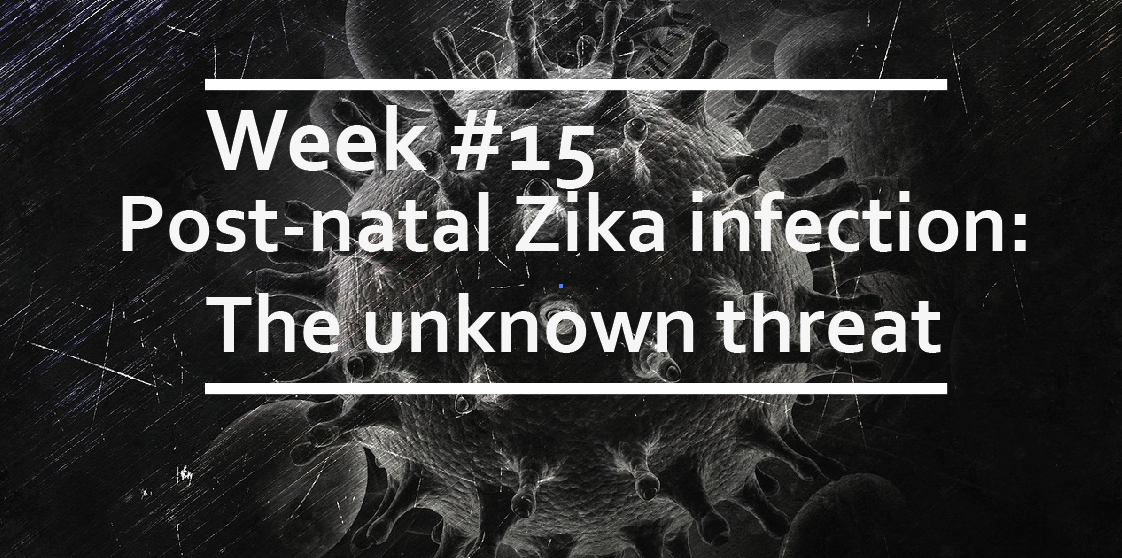Post-natal Zika infection: The unknown threat
In 2015/16 an unprecedented and unexpected outbreak of Zika virus (ZIKV) in Brazil was associated with a surge of microcephaly cases in newborn babies. This surge in microcephaly was shown to be caused by maternal transmission of ZIKA during pregnancy.
Since the 2015/16 outbreak, virologists have demonstrated that ZIKV has a preferred tropism for neuronal cells, particularly neural stem cells, and have suggested that infection of this vulnerable tissue during the delicate phase of brain development is the main cause of cell death and compromised development. The outcome is a spectrum of neurological problems referred to as congenital Zika syndrome.
ZIKV infections of newborn babies have also been reported. However, the consequences of postnatal development remain unclear. Other viruses, such as cytomegalovirus (CMV) and HIV, can cause encephalopathy and cognitive impairment when contracted shortly after birth. This raises the question, does something similar happen with ZIKV?
ZIKV in the young brain
Mavigner et al. try to answer this question by using 5-week-old rhesus macaques as a model. Animals were infected subcutaneously with 105 infectious units of ZIKV and brain development followed for 12 months.
The authors show that in this model, ZIKV infection closely resembles human infection, with the blood virus levels peaking after day 2–3 and being cleared by day 7. However, 2 weeks later, the virus is still abundant in lymph nodes and in the central and peripheral nervous system. Similar to what has been observed in adults, inflammatory infiltrates are found at day 14 in the brain and spinal cord, accompanied by higher apoptosis, raising the possibility that (as often observed in flavivirus infections) most of the damage might be due to an exacerbated immune response.
The morphological differences observed may not be striking, but are noticeable. While there was no difference in total brain volume, lateral ventricles appeared larger. Also, while the white matter was smaller than in controls, the grey matter was larger, particularly in the occipital lobe and in the right temporal-visual cortex. Also, between 3 and 6 months post-infection, the increase in hippocampal volume appeared blunted, and the connectivity between limbic regions altered.
Behavioral consequences
Since these regions are associated with behavior, these observations suggest the hypothesis that infection may disrupt the normal maturation of areas in the brain that are important for socio-emotional processes. To test this, the authors used the Human Intruder (HI) test and observed interesting differences. In the HI test, carried out at 6 and 12 months, control and infected animals are put in front of what is considered a danger stimulus (e.g., the presence of a human intruder), and their reactions are examined. All of the control animals displayed the expected behavior of “freeze”, diminished vocalization, and generally a more anxious response. On the contrary, ZIKV infected animals did not substantially alter their behavior in the presence of the intruder and expressed less hostility and anxiety. However, no difference was seen in visual recognition memory tests, suggesting that only some behaviors are impacted.
Can we trust the monkeys?
The authors themselves highlight the limitations of this study, including the low number of animal examined, which prevents them from making statements about statistical significance. Nevertherless, a clear trend was consistently observed, suggesting that ZIKV infection might compromise the development of specific areas of the brain during early development and that this could have behavioral consequences.
Also, although non-human primates are the best available model for flavivirus infection and macaques and humans display similar virological and immune patterns in response to infection, it is difficult to know how much we can extrapolate these findings to ZIKV post-natal infection of children. While this study is meaningful and the experiment well-designed to maintain physiological relevance (in many mouse experiments conducted early after the Zika outbreak, extremely high doses of virus were injected directly into the brain of mice in utero), to understand the impact of ZIKV in human, we will probably have to wait for the outcome of the current studies on Guatemala infants and children infected with ZIKV after birth. Unfortunately, it wouldn’t be entirely surprising if a virus with such strong neuronal tropism and with severe neurological sequelae upon maternal transmission also had a severe impact when contracted soon after birth, as is the case for CMV.
A virus signature?
This also raises more general questions about the developmental impact of viruses contracted in infancy. We know that viruses define and sometimes skew our immune response, and also that endogenous retroviruses have helped shape our own evolution and our defenses.
However, several studies are now suggesting an impact of early viral infections in multiple autoimmune diseases, including gluten intolerance and irritable bowel syndrome, while a strong correlation between certain endogenous retroviruses and conditions like multiple sclerosis, amyotrophic lateral sclerosis, and Alzheimer’s has also been suggested.
With its specific tropism and properties, ZIKV is more likely to be the exception than the rule, but for good or bad, the impact of viruses on our health is likely to go far deeper than we currently know.




